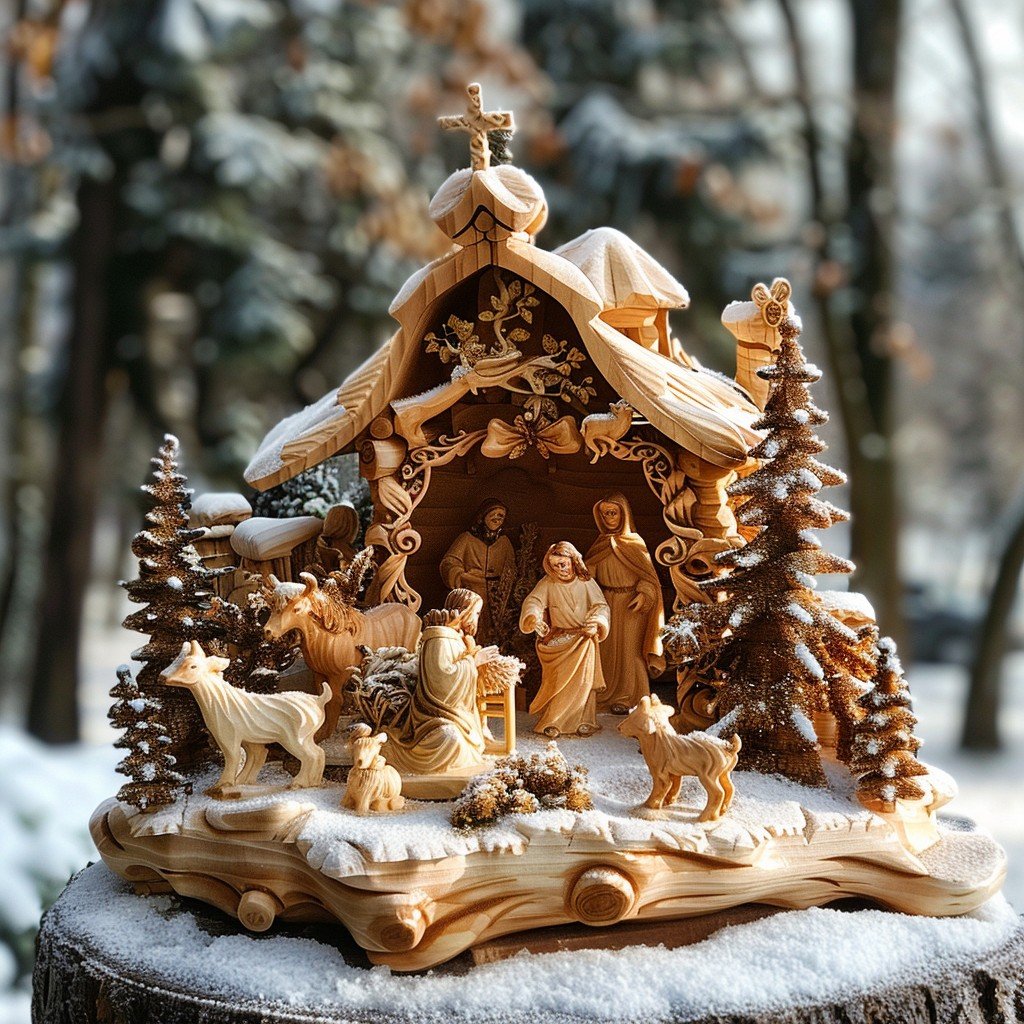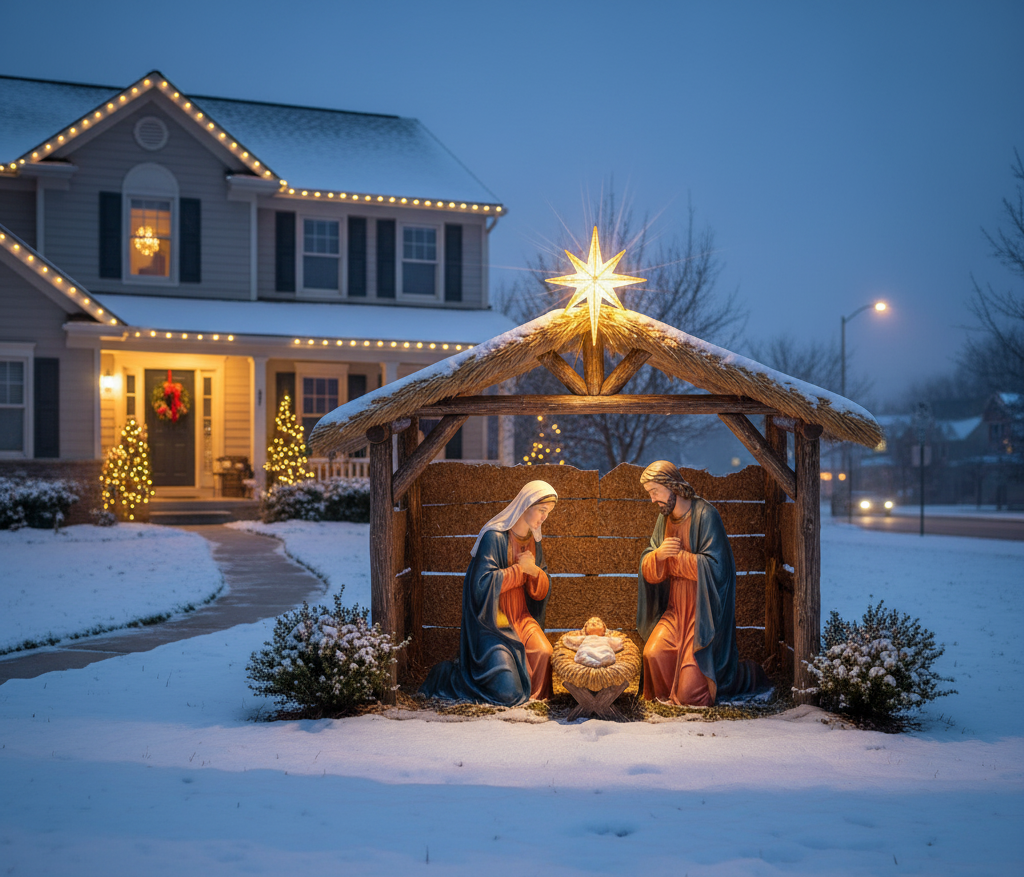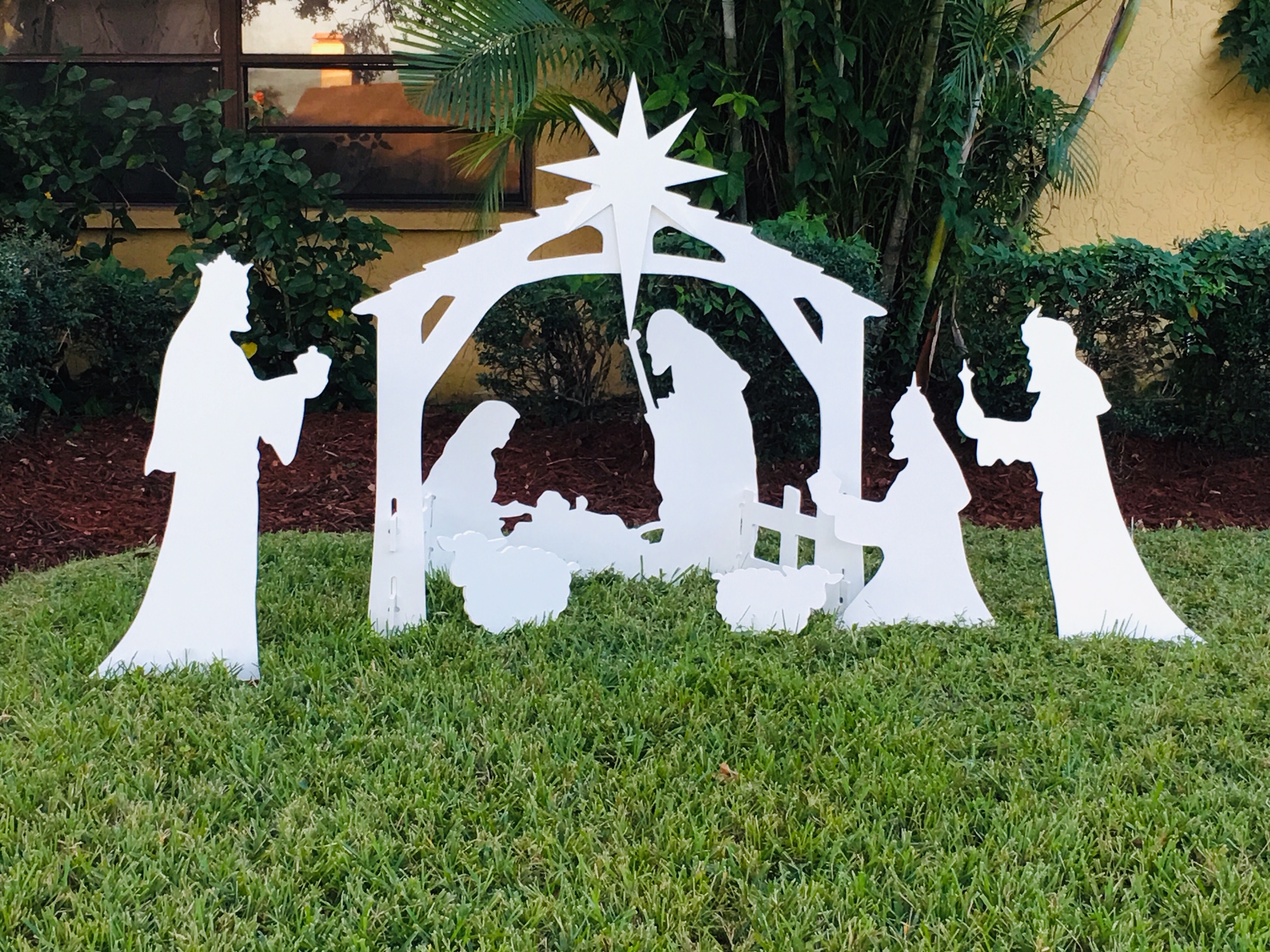Introduction
Few holiday decorations capture the spirit of Christmas quite like the Nativity scene. Whether displayed in a church, on a front lawn, or even printed on a yard sign, it tells a story that has endured for centuries: the humble birth of Jesus Christ. But where did the tradition of the Nativity scene come from, and how did it become such an iconic part of Christmas celebrations?
The First Nativity Scene
The earliest known Nativity scene was created by St. Francis of Assisi in the Italian village of Greccio in 1223. Seeking to remind people of the true meaning of Christmas, St. Francis set up a live Nativity with real animals and people to depict the birth of Jesus.
The first recreation wasn’t meant to be a decoration; it was an act of devotion, helping worshippers visualize and emotionally connect to the story of Christ’s birth.
Live Performances to Permanent Displays
After the success of St. Francis’s first Nativity scene, other towns and churches began recreating their own versions. Eventually, live scenes gave way to carved figures made from wood, clay, or stone. By the 14th and 15th centuries, these static Nativities became common across Europe, particularly in Italy, Spain, and Germany. Skilled artisans created elaborate sets featuring not only the Holy Family but also shepherds, angels, and entire village scenes.

The Spread of the Nativity Tradition
As Christianity spread, so did the Nativity scene. Each culture added its own unique touch:
- Germany introduced intricately carved wooden crèches.
- Spain and Latin America incorporated colorful, festive details.
- France popularized small figurines called santons, representing everyday villagers alongside biblical figures.
- By the 18th century, almost every Christian household in Europe displayed some form of Nativity during the holiday season.
Modern-Day Nativity Scenes
Today, Nativity scenes range from handcrafted heirlooms to outdoor yard displays, lighted inflatables, and printed banners. Churches and communities still hold live Nativities, continuing the tradition that began 800 years ago.
For businesses and homeowners, custom Nativity yard displays offer a way to share the message of peace and hope in a modern, weather-resistant format, a nod to ancient history, reimagined for today’s world.

The Meaning Behind the Scene
Beyond tradition, the Nativity remains a powerful symbol of humanity, love, and new beginnings. It reminds people that even the grandest stories can start in the humblest places, a message that resonates beyond religion and continues to bring people together during the holidays.
Conclusion
From St. Francis’s humble display in 1223 to the dazzling front-lawn scenes we see today, the Nativity has evolved but never lost its purpose: to remind us what Christmas is truly about. Whether made of marble, wood, or printed vinyl, every Nativity scene continues a centuries-old tradition of faith, creativity, and community.


